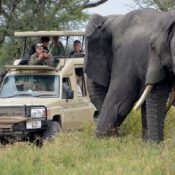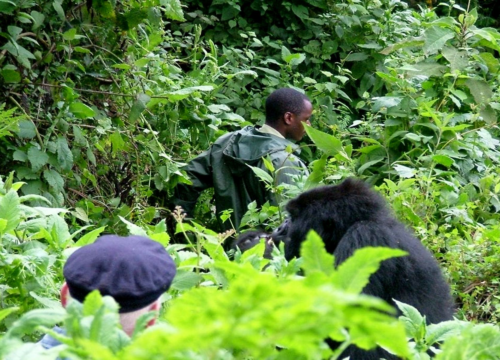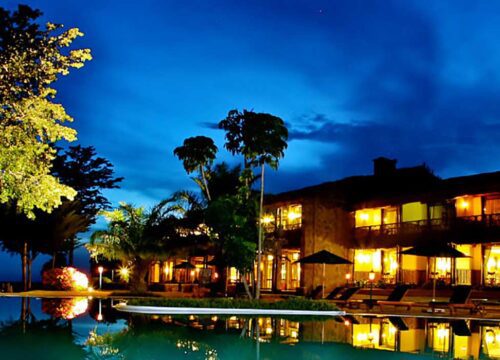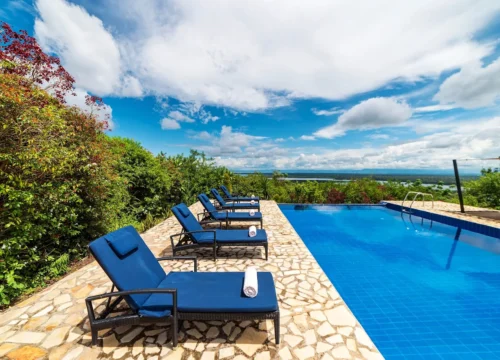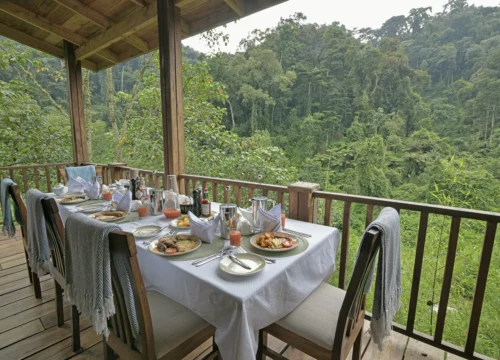Where is Victoria Falls Located?
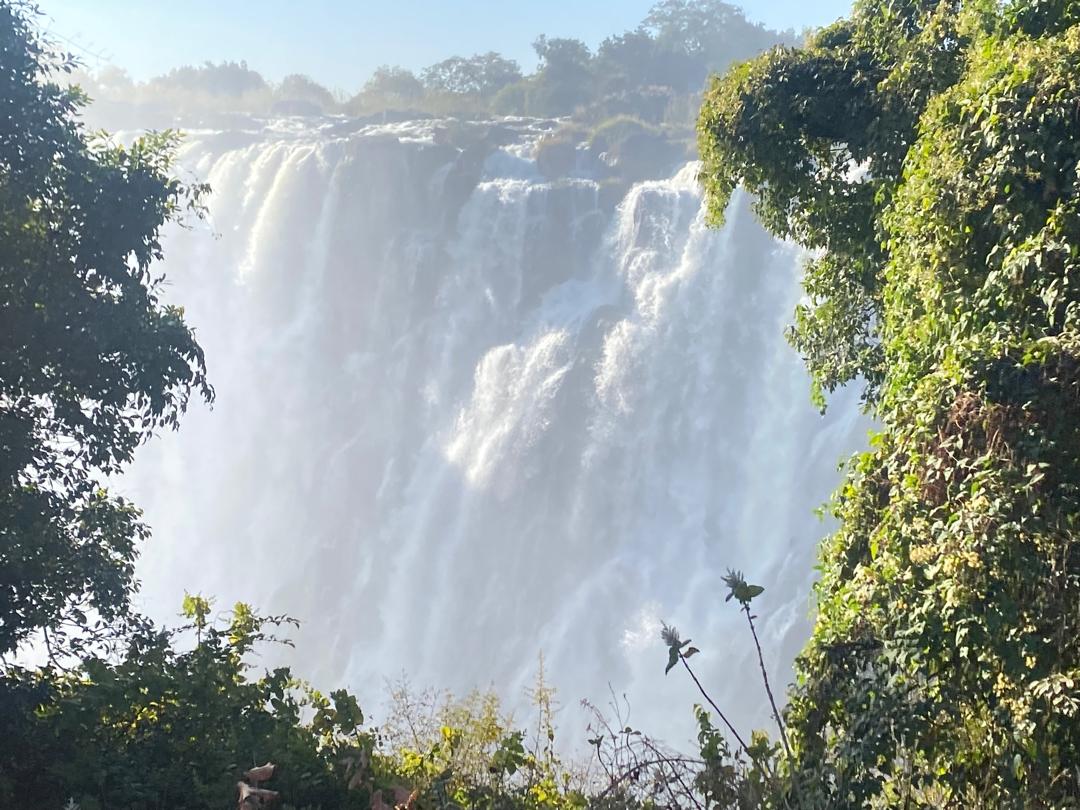
Where is Victoria Falls Located, Victoria Falls is one of Africa’s most iconic natural wonders, stands as a testament to the continent’s majestic landscapes and rich cultural heritage. Located on the Zambezi River, straddling the border between Zambia and Zimbabwe, Victoria Falls is celebrated globally for its sheer size, awe-inspiring beauty, and profound cultural significance. Spanning approximately 1,708 meters (5,604 feet) wide and plunging about 108 meters (354 feet) into the chasm below, this magnificent waterfall captivates visitors with its thunderous roar, breathtaking vistas, and diverse range of activities.
This detailed exploration delves into the geographic location, geological formation, cultural significance, tourist experiences, conservation efforts, and practical travel tips for visiting Victoria Falls, offering a comprehensive guide for travelers seeking to uncover the secrets of this natural wonder.
Where is Victoria Falls Located-Geographic Location and Borders
Victoria Falls is situated on the Zambezi River, Africa’s fourth-longest river, which flows eastward across the continent. The Falls straddle the international border between two southern African countries:
- Zimbabwe: The majority of Victoria Falls lies within Zimbabwe’s borders, specifically in the western part of the country. The town closest to the Falls on the Zimbabwean side is Victoria Falls Town, which serves as the gateway for tourists visiting this natural wonder.
- Zambia: The eastern side of Victoria Falls is located within Zambia’s territory. The nearest Zambian town to the Falls is Livingstone, named after the famous explorer David Livingstone who first documented the Falls to the Western world.
The border between Zimbabwe and Zambia runs through the middle of the Zambezi River, dividing the Falls into roughly equal parts. Both countries offer unique perspectives and experiences of Victoria Falls, making it a dual-national heritage site cherished by both nations.
Where is Victoria Falls Located-Geological Formation and Landscape
The geological origins of Victoria Falls date back millions of years, shaped by the Zambezi River’s interaction with ancient fault lines and basalt rock formations. The Zambezi River flows across a plateau characterized by hard basalt rock, which abruptly drops off at the Falls where the river plunges into a series of gorges carved through softer sedimentary rock layers. This combination of geological forces has created the dramatic cascade that defines Victoria Falls today.
The main waterfall spans the width of the Zambezi River, creating a curtain of falling water that generates a perpetual mist visible from miles away. During the dry season, the flow rate diminishes, revealing the underlying rock formations and allowing visitors to explore the riverbed. In contrast, the rainy season brings a surge of water, transforming Victoria Falls into a thunderous display of nature’s power and enveloping the surrounding area in mist and spray.
Cultural Significance and Indigenous Perspectives
Victoria Falls holds deep cultural significance for the indigenous peoples of the region, who have revered this natural wonder for centuries. Local names such as Mosi-oa-Tunya (“The Smoke that Thunders”) in the Tonga language and Shungu Namutitima (“Boiling Water”) in the Lozi language reflect the awe and respect that the Falls inspire. These names highlight the spiritual connection that indigenous communities have with the natural environment, viewing the Falls not only as a physical landmark but as a sacred entity integral to their cultural identity.
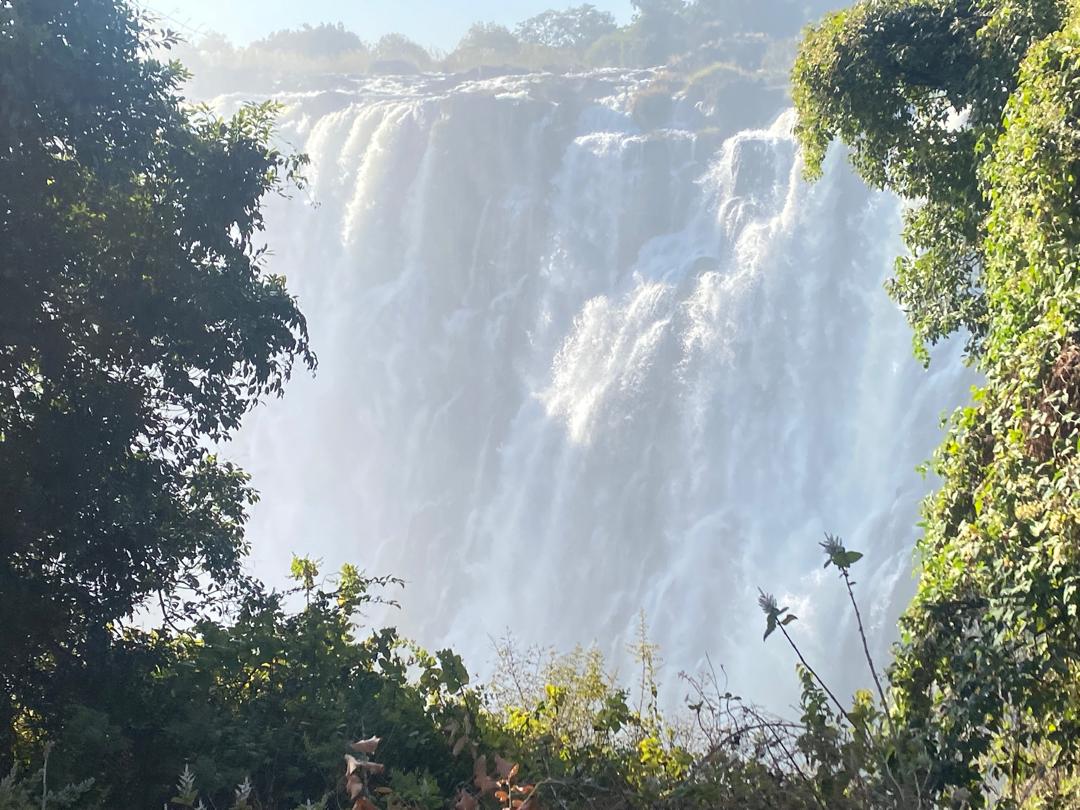
European explorer David Livingstone is credited with “discovering” Victoria Falls in 1855, naming them in honor of Queen Victoria of Britain. His accounts of the Falls brought international attention to this natural wonder and sparked interest in exploring the African continent. Today, the legacy of exploration and discovery continues to attract visitors from around the world, drawn by the allure of Victoria Falls and its rich cultural heritage.
Where is Victoria Falls Located-Ecological Diversity and Wildlife Habitat
Beyond its geological and cultural significance, Victoria Falls is renowned for its diverse flora and fauna. The constant spray from the Falls creates a unique microclimate known as a rainforest micro-habitat, characterized by lush vegetation and a variety of plant species adapted to the moist conditions. The surrounding area supports a rich biodiversity, with species ranging from elephants and buffalo to various antelope species and smaller mammals.
Birdlife thrives in the rainforest environment, with over 400 species recorded in the vicinity of Victoria Falls. African fish eagles, hornbills, herons, and swifts are among the notable bird species found here, making it a paradise for birdwatchers and nature enthusiasts. The Falls and its adjacent national parks, such as Victoria Falls National Park and Mosi-oa-Tunya National Park, offer ample opportunities for wildlife viewing and nature walks, providing visitors with a deeper appreciation of the ecological diversity supported by this natural wonder.
Where is Victoria Falls Located-Activities and Adventures
Visiting Victoria Falls offers a myriad of experiences tailored to diverse interests and preferences. Whether seeking adventure, cultural immersion, or tranquil natural beauty, travelers can choose from a range of activities that highlight the best of this iconic destination:
1. Viewing Points and Scenic Walks: Experience the grandeur of Victoria Falls from various viewpoints along its edge. The Knife-Edge Bridge offers panoramic views of the main Falls, while the Boiling Pot provides a unique perspective from the base of the gorge. Scenic walks through the rainforest allow visitors to appreciate the lush vegetation and diverse wildlife that thrive in this misty environment.
2. Adventure Activities: For adrenaline enthusiasts, Victoria Falls offers a host of thrilling adventures. Whitewater rafting on the Zambezi River’s rapids provides an exhilarating experience amidst stunning scenery. Bungee jumping from the Victoria Falls Bridge and zip-lining across the Batoka Gorge offer breathtaking views of the Falls and the Zambezi River below. Helicopter and microlight flights provide aerial perspectives, allowing visitors to appreciate the scale and beauty of Victoria Falls from above.
3. Cultural Encounters: Immerse yourself in the rich cultural heritage of the region through visits to local villages and cultural centers. Engage with the Tonga and Lozi communities, who share their traditions, music, and crafts, offering insights into their way of life and deep-rooted connection to the natural environment.
4. Wildlife Safaris: Explore the surrounding national parks on guided wildlife safaris, seeking out iconic African species such as elephants, hippos, giraffes, and lions. Sunset cruises on the Zambezi River provide opportunities to observe wildlife along the riverbanks while enjoying spectacular views of the African sunset.
Conservation Challenges and Sustainability Efforts
Victoria Falls faces challenges related to environmental conservation and sustainability, despite its natural beauty and ecological significance. Climate change poses a threat to the region’s rainfall patterns, affecting the flow of water over the Falls and impacting the surrounding ecosystems. Efforts are underway to monitor and mitigate these effects, with initiatives focusing on sustainable tourism practices, community involvement, and conservation education.
Local authorities and conservation organizations work collaboratively to preserve the integrity of Victoria Falls and its surrounding ecosystems, balancing tourism development with environmental protection. Responsible tourism practices, such as waste management programs and wildlife conservation initiatives, aim to minimize the environmental footprint of visitors while promoting the long-term sustainability of the area.
Best Time to Visit and Travel Tips
When planning a visit to Victoria Falls, it’s essential to consider the best time of year based on personal preferences and interests:
- Peak Flow Season (February to May): Experience Victoria Falls at its most dramatic, with the highest water flow creating a thunderous display of cascading water and mist. The rainy season brings lush vegetation and vibrant landscapes, ideal for photography and witnessing the full force of nature.
- Dry Season (September to January): Explore the Falls with reduced water flow, offering clearer views of the underlying rock formations and the opportunity to explore the riverbed. The dry season also provides excellent conditions for adventure activities such as whitewater rafting and scenic flights.
Planning Your Journey
Nextgen Safaris, a premier tour company specializing in African adventures, offers customized tours to Victoria Falls that cater to diverse interests and preferences. With expert guides and personalized itineraries, Nextgen Safaris ensures an immersive and memorable experience, highlighting the best of Victoria Falls and its surrounding attractions. Whether embarking on a wildlife safari, participating in adrenaline-pumping activities, or exploring the cultural heritage of the region, travelers can expect unparalleled service and unique insights into this iconic African destination.
Conclusion
Victoria Falls, situated on the Zambezi River between Zimbabwe and Zambia, stands as a symbol of Africa’s natural beauty, cultural heritage, and ecological diversity. From its thundering waters and mist-shrouded rainforests to its rich wildlife and adrenaline-pumping activities, Victoria Falls offers a multifaceted experience that captivates visitors from around the world. Whether marveling at the sheer power of the Falls, engaging with local communities, or embarking on thrilling adventures, every aspect of a visit to Victoria Falls promises discovery, wonder, and lasting memories.
As conservation efforts continue and sustainable tourism practices evolve, Victoria Falls remains a beacon of natural wonder and a testament to the importance of preserving our planet’s most extraordinary landscapes. Plan your journey to Victoria Falls and embark on an unforgettable adventure to one of the world’s greatest waterfalls. Discover the magic of Victoria Falls and immerse yourself in the beauty and splendor of Africa’s heartland, where nature reigns supreme and every moment is filled with wonder and possibility.
GENERAL INFORMATION
ENTRY REQUIREMENTS: All visitors to Zambia must have a valid passport with at least 4 consecutive blanks pages. Any applicable visa and/or relevant documentation are the responsibility of the traveler. For further information on Visa requirements visitors are advised to contact their nearest Zambia Embassy or Consulate.
Check here for Visa info
LANGUAGE: English
TIME: GMT +3
VOLTAGE: 220 Volts/AC50Hz. Sockets are UK style, 3 pin square plugs. Power is from the government in the city/major towns and generator with inverter back up in the Safari Lodges and Camps.
CURRENCY: Foreign currency must be changed at the Bank, Bureau de Change, and Hotel/Safari lodge/Camp/Resort. Major Credit Cards, Master card, Visa, American Express, are usually accepted throughout the country. Where credit cards are accepted, the payment will normally be recorded in US$ regardless of the card’s default currency.
CLOTHING: Dress is mainly informal and should be comfortable as well as practical. Something warm should be brought along for early morning and evenings. Safari clothes are available from hotels/lodges/camps.
BAGGAGE: Where possible, travel light. Baggage space on safari is limited to medium suitcase or soft bag per person plus reasonable amount of hand luggage. There is 15 Kilogram per person limit on all flights to the wildlife sanctuaries. Excess luggage must be stored in your arrival hotel.
WATER: You will find many different of opinion of what is safe and what is not. We recommend for peace of mind, to drink local Bottled Mineral water. It is important to drink plenty of water especially during the hotter months. We would recommend that guests drink at least 2 to 3 liters of water per day to limit the effects of dehydration.
HEALTH: Africa is a safe and secure destination; however, it is a good idea to take a few precautions. Kindly consult your GP or local doctor at least 6 weeks before you travel, with regards: Malaria prophylactics. East Africa is a known malaria area and preventive measures are essential. You are advised to take one of the recommended anti-malarial drugs. Be sure to wear long sleeved shorts and trousers after sunset and spray the exposed parts of your body with a mosquito repellent spray Remember to protect yourself from direct sun rays with sunscreen cream or safari hat.
DIETARY REQUIREMENTS: For those guests with specific dietary requirement, please ensure we are notified prior to travel
GRATUITIES: As a guideline and dependent on how happy you are, we would suggest the following: The General Hotel/Lodge/Camp Staff – Approximately U$ 10.00 per person per day Driver Guides – Approximately US$ 15.00 to US$ 20.00 per person per day.
PHOTOGRAPHY: Please be careful when photographing public buildings, airports, bridges, the national flag and people in uniform. Ensure that you have sought permission before photographing local people and their villages. If in doubt, please check with your guide.
Read about
10 Things you Should NOT DO on an African Safari.
What to expect on a safari in Uganda.
Bwindi Impenetrable National Park
How to Choose the Best Tour Operate for Your Safari in Africa
12-Day Gorilla Tracking in Bwindi
East African Safaris
1 Day Jinja Ultimate tour Experience
1 Day White Water Rafting in Jinja
3 Days Bwindi Gorilla Habituation via Rwanda
3 Day Birding Safaris and Photography in Uganda
3 Day Safari to Queen Elizabeth National Park
3 Day fly in Gorilla Trekking Safari from Masai Mara
3 Day Grand Gorilla Trekking Safari
4 Day Chimpanzee and Gorilla Trekking Safari
4 Day Murchison Falls and Jinja tour
Packages with Gorilla Trekking
1 Day Uganda Gorilla Trekking Safari from Kigali Rwanda
3 Days Fly in Gorilla Habituation Safari
3 Days Budget Gorilla Safari in Uganda
3 Days Customizable Rwanda Gorilla Tracking Safari
3 Days Gorilla Trekking Experience and Lake Bunyonyi
3 Days Last Minute Gorilla Trekking & Lake Bunyonyi in Uganda
3 Days Rwanda to Uganda Gorilla Safari
3 Days Uganda Gorilla Safari from Kigali
4 Days Gorilla and Golf Safari in Uganda
4 Days Rwanda Gorilla Adventure
5 Day Gorillas and Game Drive Safari
5 Days Golf and Gorilla Safari in Uganda
5 Days Rwanda Gorillas and Culture Tour
6 Day Uganda Gorilla and Wildlife Tour
6 Days Budget African Safari with Gorilla Trekking
7 Days Gorilla and Chimpanzee Trekking in Uganda
7 Days Uganda Budget Gorillas and Primate Trip
8 Days Gorilla Trekking Vacation to Bwindi National Park
8 Days Uganda Gorilla and Chimpanzee Safari
10 Days Rwanda and Uganda Gorilla Safari
14 Days Uganda Rwanda Study Tour & Gorilla Trekking Trip
BEST AFRICAN DESTINATIONS ITINERARIES
SOUTHERN AFRICA DESTINATION ITINERARIES
Botswana
Mozambique
Namibia
South Africa
Malawi
Zambia
Zimbabwe
EASTERN AFRICA DESTINATION ITINERARIES
Kenya
Rwanda
Tanzania
Uganda
DR. Congo
NORTHERN AFRICA DESTINATION ITINERARIES
South Sudan
INDIAN OCEAN
Madagascar
Zanzibar
Seychelles
Recent Posts
Last Minute Deals
Quick booking process
+49 1575 4711313



